Jet Boat Essentials: A Comprehensive Guide for Enthusiasts
Jet boats are a unique and thrilling way to experience the water, offering both high-performance excitement and versatile recreational opportunities. These boats rely on a jet propulsion system, which sets them apart from traditional propeller-driven vessels. Understanding the fundamentals of jet boats allows potential enthusiasts to make informed decisions on whether this type of watercraft suits their needs and preferences.
The history of jet boats dates back to the 1950s when New Zealand inventor Sir William Hamilton developed a water jet propulsion system to navigate shallow and fast-flowing rivers. Today, many manufacturers produce various models of jet boats designed for different purposes, ranging from spirited performance rides to family-friendly outings and watersports adventures. Recognizing the distinct features, functionalities, and benefits these boats offer is crucial for those considering investing in a jet-powered vessel.

Key Takeaways
- Jet boats offer a thrilling and versatile experience on the water, thanks to their unique jet propulsion system.
- The invention of jet boats dates back to the 1950s, with numerous manufacturers now producing a variety of models for diverse uses.
- Understanding jet boat features, performance, and applications helps potential buyers make sound decisions when choosing this type of watercraft.
Fundamentals of Jet Boats
Jet boats are specialized watercraft that utilize a jet propulsion system, offering a unique boating experience. These boats are highly regarded for their shallow draft and high speed, making them suitable for a variety of water conditions and activities.
The bow of a jet boat is designed to be aerodynamic, allowing the vessel to cut through the water with minimal resistance. This is crucial in achieving high speeds and efficient operation, as a streamlined bow helps to reduce drag and improve fuel consumption.
The hull of a jet boat is typically constructed using lightweight materials such as aluminum or fiberglass, contributing to the craft's overall agility and speed capabilities. The design of the hull generally features a flat or semi-V shape which is essential for the boat's ability to navigate shallow and challenging waterways.
When it comes to design, a key component of jet boats is their propulsion system. Instead of traditional propellers, jet boats use an internal system that takes in water through an inlet, accelerates it with an impeller, and then ejects it through a nozzle at high velocity. This process generates thrust, enabling jet boats to travel at high speeds with minimal risk of damage from submerged obstacles, as there is no external propeller.
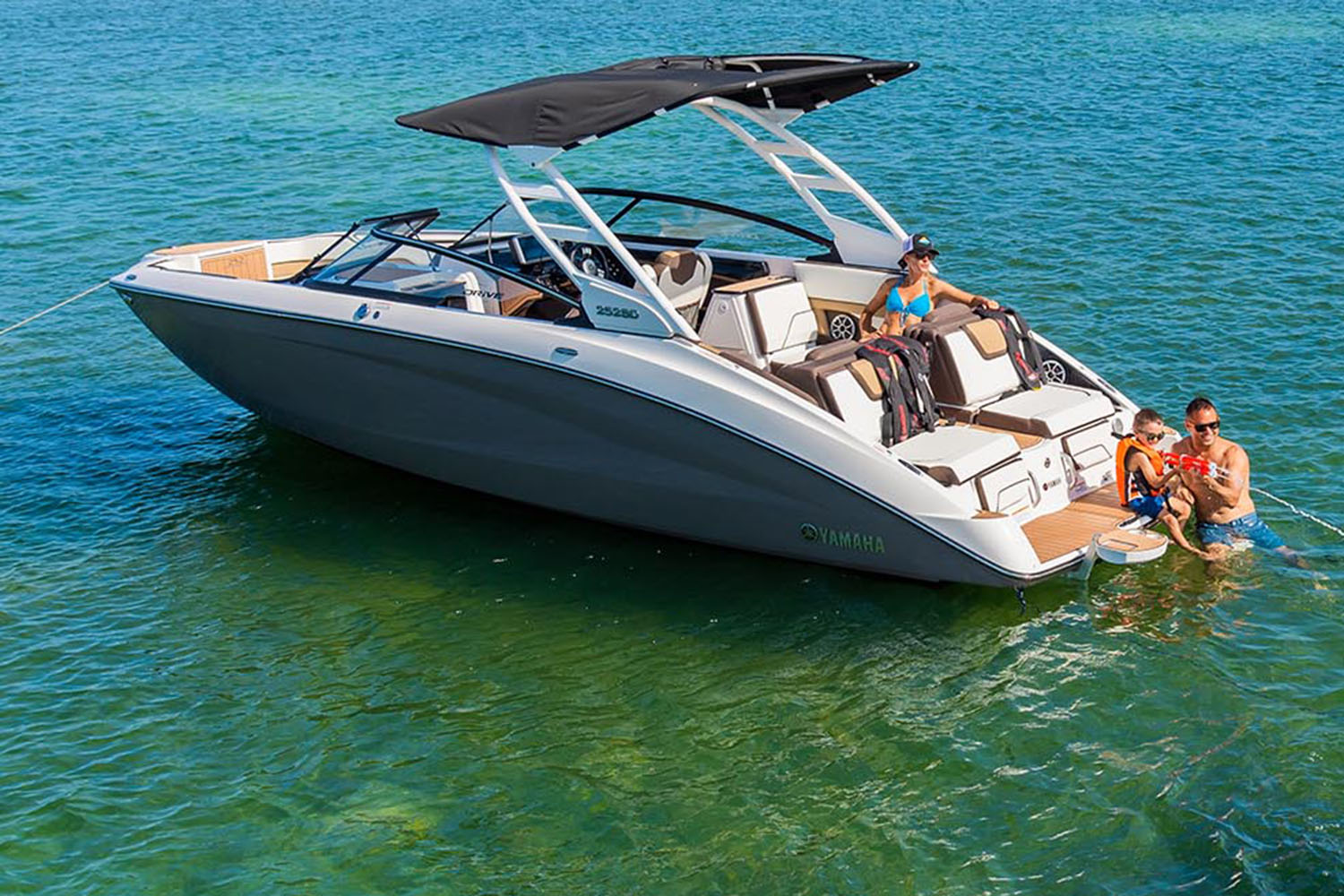
Jet boats come in a variety of size ranges to cater to diverse needs and preferences. Smaller models are often used for recreational purposes such as water sports and exploring shallow waterways, while larger jet boats can accommodate more passengers and tackle more demanding conditions. The size of the jet boat impacts its speed, maneuverability, and fuel efficiency, making it essential to consider the intended purpose and usage when making a decision.
In conclusion, jet boats are innovative vessels that offer users a thrilling and versatile boating experience. With their unique characteristics in propulsion, design, and size options, these watercraft are suitable for a wide range of activities and environments. Investing in a jet boat can be a game-changing decision for those seeking a powerful, agile, and exhilarating ride on the water.
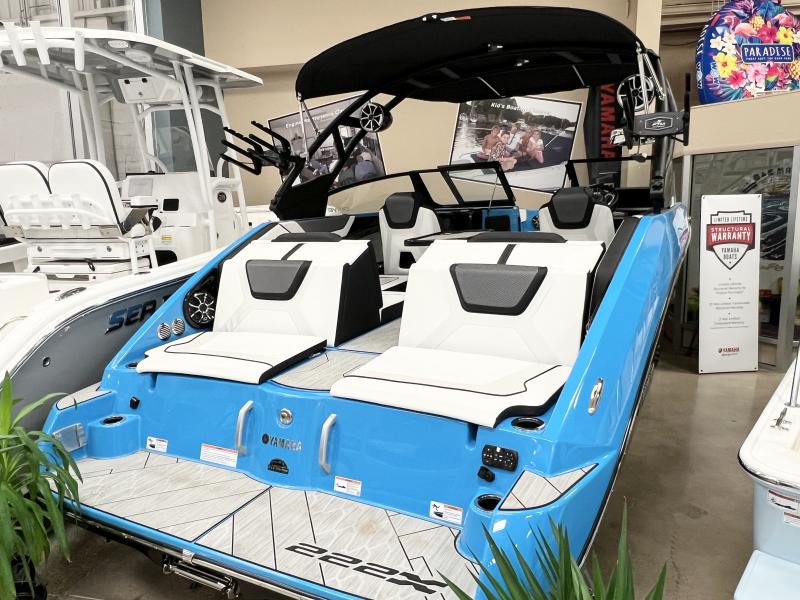
History and Manufacturers
Jet boats have an interesting history that dates back to the 1950s. The invention of the jet boat is credited to Sir William Hamilton, a New Zealander who wanted to create a watercraft capable of navigating shallow and swift waters. He developed the marine jet drive as a solution for this, and partnered with Kermath Manufacturing to produce jet boats for public use in 1953.
Over the years, multiple manufacturers have emerged in the jet boat industry, providing customers with diverse offerings and innovative designs. Some of the most notable manufacturers in the jet boat world include Yamaha, Scarab, and Chaparral.
Yamaha is a globally recognized company primarily known for its motorcycles and musical instruments. However, Yamaha also has a solid reputation in the marine industry, manufacturing various watercrafts including jet boats. Their lineup of jet boats offers consumers a range of styles, from small sport boats to large, luxurious vessels designed for cruising and watersports.
Scarab is another major player in the jet boat industry, known for their stylish and high-performance boats. The company rose to fame in the 1980s when their Scarab 38 KV was featured in the popular television series Miami Vice. Since then, Scarab has continued to produce innovative and powerful jet boats, focusing on speed and agility as key features for their customers.
Chaparral is a well-established boat manufacturer that entered the jet boat market in 2014, with the introduction of their Vortex series. This move showcased Chaparral's commitment to producing cutting-edge watercrafts, with features aimed at providing exceptional performance, handling, and comfort for boaters.
These manufacturers have shaped the jet boat industry by continually pushing boundaries and developing technologically advanced watercrafts. The competitive nature of the market has allowed for constant advancements, benefiting consumers looking for the latest and greatest in jet boats.

Types of Jet Boats
Jet boats are a popular choice for both recreational and commercial users due to their versatility, power, and speed. While there are many variations, the main types of jet boats include inboard, outboard, center console, pontoon, runabout, and day cruising boats.
Inboard jet boats have the engine located inside the hull of the boat. They are known for their reliability and increased power output due to their direct drive systems. Additionally, inboard jet boats typically have a lower draft, allowing them to navigate shallow waters more easily than their outboard counterparts.
Outboard jet boats, on the other hand, feature an external engine mounted on a transom at the rear of the boat. This design allows for easier maintenance and access to the engine. Outboard jet boats often provide excellent maneuverability and can be found in various sizes and capacities, making them suitable for a wide range of purposes.
Center console jet boats are designed with the helm station in the middle of the boat and are commonly used for fishing and water sports. Their open layout provides ample space for anglers to move around and access gear easily. Furthermore, the centralized helm station offers better overall visibility while navigating and allows for easy communication among passengers.
Pontoon jet boats are characterized by their two or three large pontoons that provide support for a flat, spacious deck. This design offers increased stability and ample room for passengers and gear, making them ideal for recreational activities such as fishing, entertaining, and water sports.
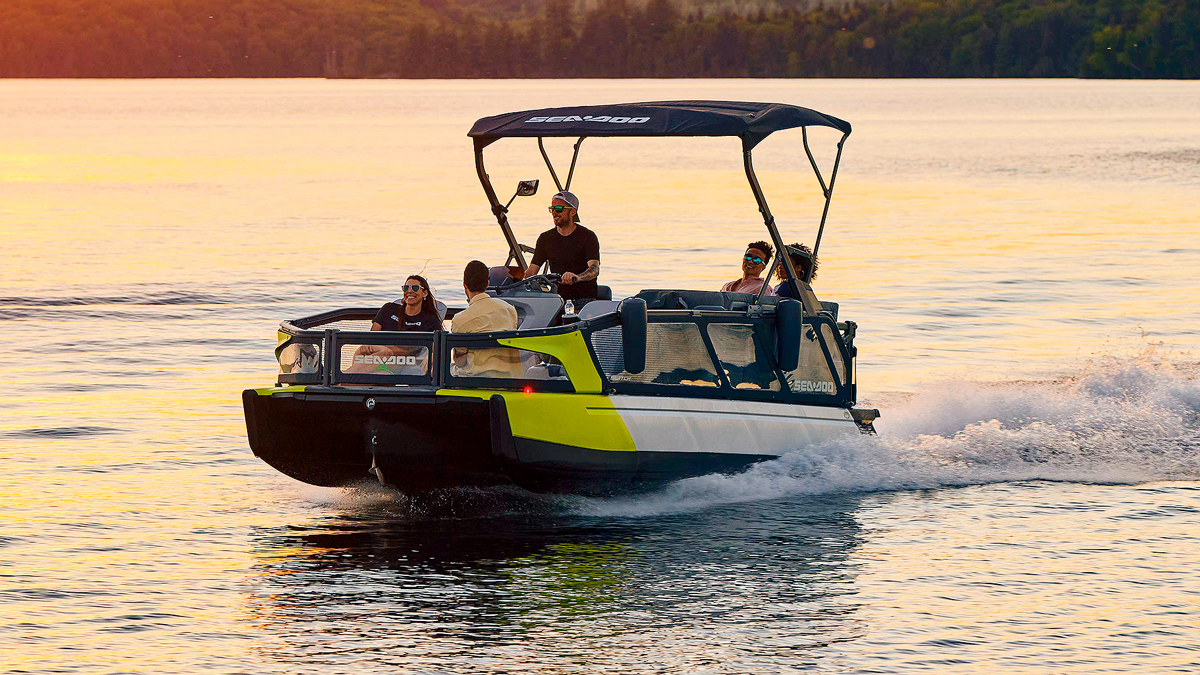
Runabout jet boats are compact, versatile boats designed for various activities, including waterskiing, wakeboarding, and cruising. They typically have either an inboard or outboard jet propulsion system and may include features such as a tow eye for watersports, comfortable seating, and optional canvas covers for protection from the elements.
Day cruising jet boats are designed for leisurely excursions on the water and can range from small, open boats to larger, enclosed vessels with cabins. These boats focus on providing passengers with a comfortable and enjoyable on-water experience, often including amenities such as ample seating, a swim platform, and a built-in cooler.
Each of these jet boat types offers unique advantages, depending on the specific needs and preferences of the user. Factors such as intended use, desired features, and budget should be considered when choosing the right jet boat to ensure a satisfying and enjoyable boating experience.
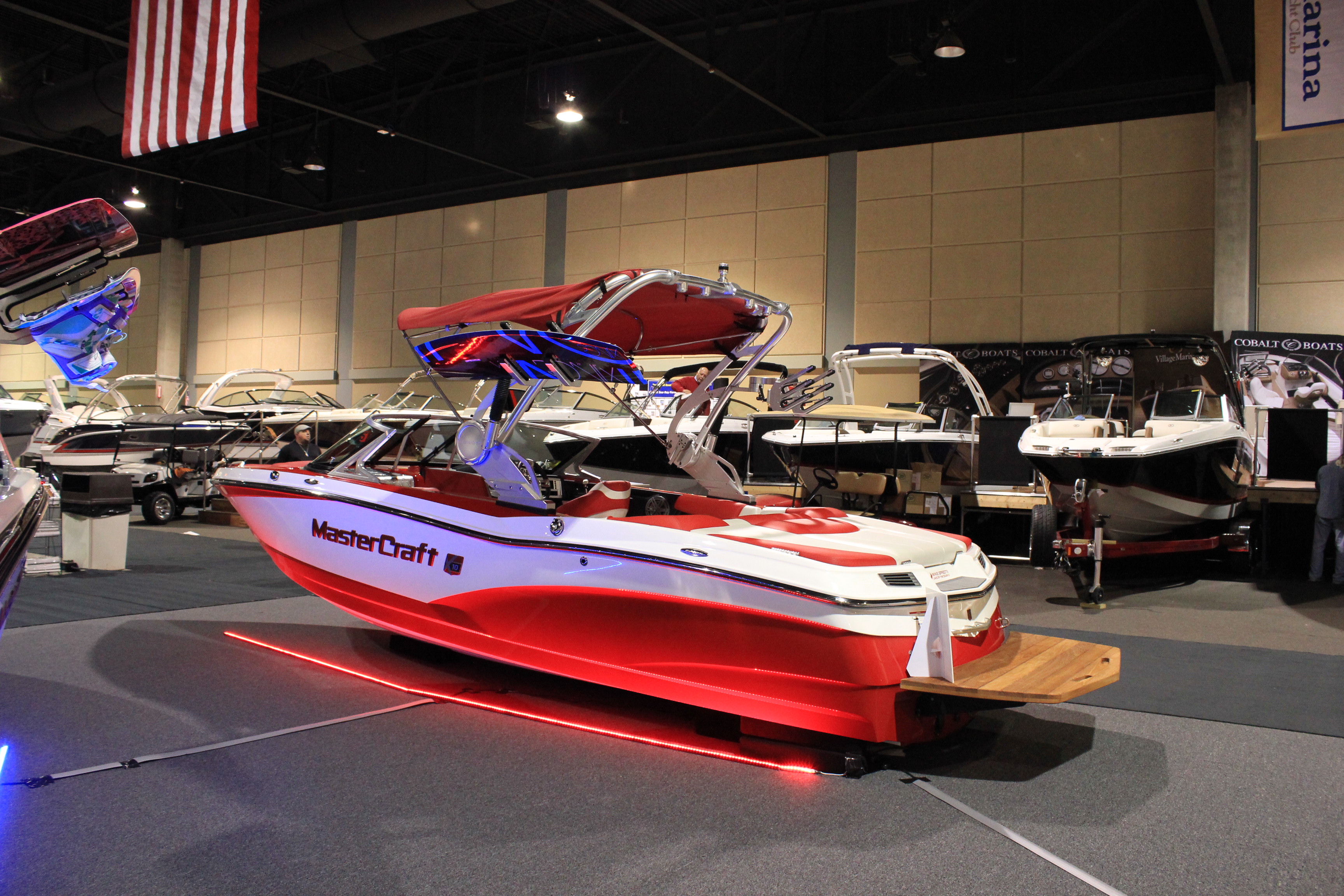
Jet Boat Performance
Jet boats are known for their impressive performance on the water, providing thrilling experiences for both drivers and passengers. One of the key factors contributing to this performance is the horsepower rating of the jet boat's engine. Jet boat engines can range from modest outputs of around 100 horsepower to more powerful engines boasting upwards of 300 horsepower or more. Higher horsepower ratings often translate to faster acceleration and higher top speeds on the water.
Acceleration is another important aspect of jet boat performance. With powerful engines producing ample thrust, jet boats can achieve rapid acceleration, allowing them to reach high speeds in a matter of seconds. This makes them an excellent choice for water sports enthusiasts and thrill-seekers who enjoy the adrenaline rush of quick acceleration and high-speed maneuvering.
Another factor that contributes to the performance of these boats is their ability to operate at higher RPMs (revolutions per minute). Jet boat engines are designed to turn at higher RPMs, which results in more efficient power delivery and better overall performance. This also allows the boats to maintain optimal speed and handling characteristics even in rough waters or tight turns.
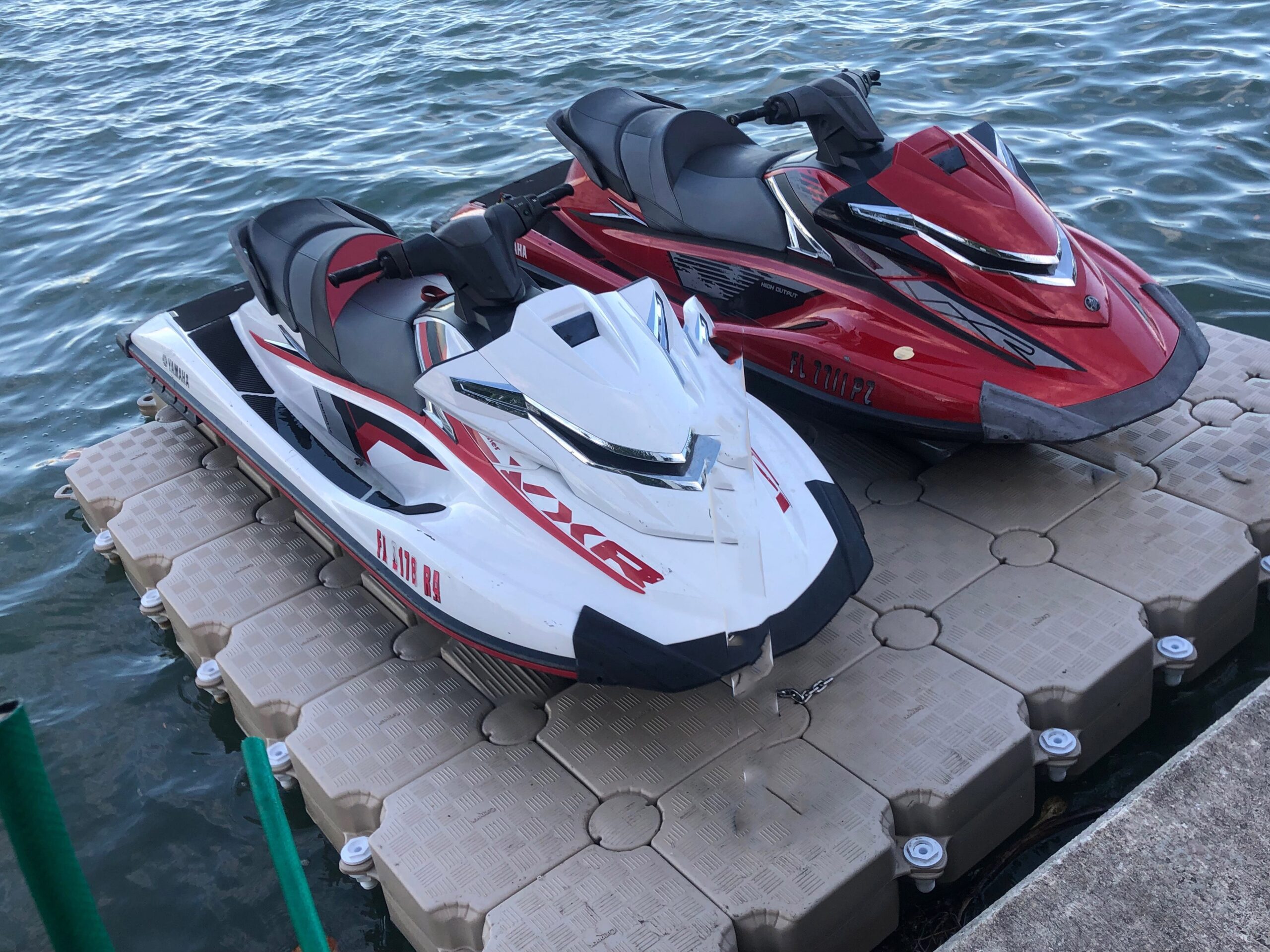
It is worth mentioning that the performance of a jet boat may be influenced by factors such as the hull design, weight distribution, and propeller choice. For instance, a lightweight hull can improve the boat's responsiveness and handling, while a well-balanced weight distribution enhances stability and control.
In summary, jet boat performance is determined by various factors, including engine horsepower, acceleration, and their ability to operate at higher RPMs. These boats are designed to offer exhilarating experiences on the water, with quick acceleration and impressive maneuverability, making them an exciting choice for water sports and leisure activities alike.
Steering and Handling
Jet boats are known for their responsive and agile steering, making them a popular choice for those seeking thrilling water-based activities. The steering system of a jet boat relies on the thrust generated by the water jet pump, which is located at the stern of the boat within the hull. This allows for precise and efficient steering, even at high speeds1.
Handling a jet boat is often considered more aggressive due to its quick response to steering input. The driver can easily control the acceleration, direction, and movement of the boat with just a steering wheel and an accelerator2. This makes jet boats ideal for adventurous individuals who enjoy navigating through challenging water passages or participating in water sports such as wakeboarding or water skiing.
Maneuverability is one of the key strengths of jet boats. Unlike traditional boats that use propellers, jet boats allow for virtually instant response when changing directions3. However, it is important to note that when in neutral or at very low speeds, the steering capabilities of a jet boat may be limited or even non-existent, as there is not enough waterjet thrust to maneuver effectively4. To ensure proper handling in various situations, drivers should familiarize themselves with their jet boat's specific capabilities and limitations.

In forward motion, jet boats have an edge in handling and steering due to their waterjet propulsion system5. This system eliminates the need for a separate propeller, which can cause drag and impact maneuverability in traditional boats. As a result, jet boats can swiftly navigate tight turns and rapidly adjust their heading when needed.
Overall, the steering and handling qualities of jet boats make them a unique and exhilarating choice for water enthusiasts. With adequate knowledge and experience, drivers can leverage these qualities to navigate quickly and accurately, ensuring the best possible performance on the water.
Footnotes
- Personal Watercraft: Action/Reaction Hazards ↩
- Jet Boating on Canterbury Rivers-2015 ↩
- Marine Jet Drives: Operation and Maintenance ↩
- Simulation of Ship Handling in Reverse ↩
- Practical Application of Water Jet Propulsion in Pleasure and Commercial Boats ↩
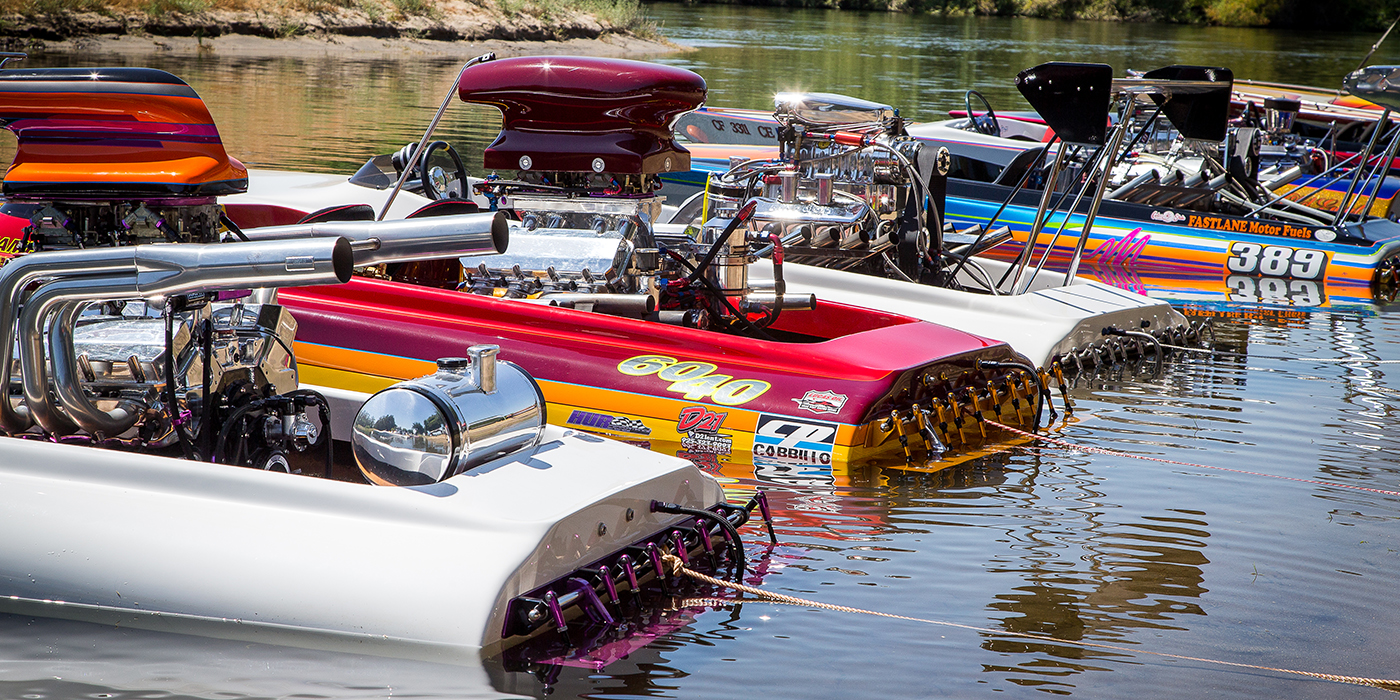
Jet Boat Engines
Jet boat engines are instrumental in powering the vessels through a range of water conditions. They come in various models and designs to suit different needs and preferences. Some of the popular engines in the market include Rotax, Yamaha marine engine, inboard engines, and the Vortex 2430 VRX.
Rotax engines are widely known for their reliability and performance. They are designed to provide exceptional power and torque, ensuring that jet boats can reach impressive speeds and handle various water conditions with ease. These engines also feature advanced technologies to enhance fuel efficiency and reduce emissions.
The Yamaha marine engine is another popular choice for jet boat enthusiasts. Yamaha is a reputable brand that has been manufacturing engines for various watercraft for decades. Their marine engines are designed with high-performance capabilities and durability in mind. They also incorporate Yamaha's innovative technologies to deliver excellent fuel efficiency, smooth operation, and low noise levels.
Inboard engines are a common type of jet boat engine that offers a compact and easily maintainable solution. These engines are mounted inside the hull of the boat, making them less exposed to water and debris. Inboard engines provide a lower center of gravity, which contributes to improved stability and handling. Moreover, their position within the hull allows for better noise insulation, making the ride more comfortable for passengers.
Lastly, the Vortex 2430 VRX is a powerful engine that boasts impressive performance and efficiency. This engine is specifically designed for jet boats, and its compact design makes it an ideal choice for smaller vessels. The Vortex 2430 VRX features a supercharged, intercooled system delivering exceptional power, along with advanced fuel injection technology to optimize fuel consumption and reduce emissions.
In conclusion, jet boat engines play a critical role in the performance and efficiency of the watercraft. The choice of engine depends on factors such as the size of the boat, intended use, and the user's preferences. Some popular options include Rotax, Yamaha marine engine, inboard engines, and the Vortex 2430 VRX.

Jet Boat Propulsion
Jet boats are a popular choice among boating enthusiasts due to their unique propulsion system. This system uses a combination of components, including an impeller, jet pump, and nozzle, to generate thrust that propels the boat through the water.
The heart of a jet boat propulsion system is the impeller, a rotating component with curved blades designed to draw water into the jet pump. As the engine powers the impeller, water is accelerated through the pump at high speed, creating a high-pressure flow of water. This high-pressure flow is essential for the efficient functioning of the jet propulsion system.
The jet pump, a key component in the system, transforms the water flow from the impeller into a focused jet. Encased within the boat's hull, the pump receives the accelerated water and sends it through a narrow outlet in the stern of the boat, also known as the nozzle. This nozzle is responsible for directing the stream of water that propels the boat forward.
Ultimately, the efficiency and effectiveness of a jet boat's propulsion system hinge on the nozzle's design. By adjusting the angle, shape, and size of the nozzle, a jet boat can achieve optimal thrust and directional control, allowing for smooth handling and navigation, even at high speeds.
In contrast to traditional propeller-driven boats, jet boats offer greater agility and maneuverability. Their compact and enclosed propulsion system eliminates the risk of propeller damage and enhances safety for swimmers and marine life. Additionally, jet boats are well-suited for shallow water navigation, as their engine components are less likely to contact the riverbed or ocean floor.
To summarize, jet boats are distinguished by their unique propulsion system, which relies on an impeller, jet pump, and nozzle to generate thrust. This design allows for exceptional handling and navigation, making jet boats a popular choice for many boating enthusiasts.

Jet Boats and Watersports
Jet boats have become an integral part of many popular watersports, offering thrilling experiences and amplifying aquatic adventures. With their powerful engines and agile maneuverability, these boats provide endless opportunities for enthusiasts to participate in activities such as wakeboarding, water skiing, and more.
Wakeboarding is a popular sport where riders are towed behind a jet boat on a buoyant board, much like a surfboard. The jet boat's wake creates a dynamic wave for the wakeboarder to perform jumps, flips, and other aerial maneuvers. As the rider gains more proficiency, the boat can accelerate, generating a larger wake for more complex tricks.
Water skiing is another enjoyable activity involving jet boats. Skiers are pulled behind a boat at varying speeds, balancing on one or two narrow skis while gliding across the water. As the jet boat's powerful engine creates a stable wake, water skiers can perform jumps, slaloms, and other maneuvers with ease.
When it comes to accommodating a diverse range of water sports enthusiasts, jet boats excel. Their versatility allows them to suitably cater to different levels of expertise, from novice skiers to professional wakeboarders. By adjusting the boat's speed, riders can progressively improve their skills and advance to more challenging techniques.
In summary, jet boats have significantly enhanced the watersports landscape, providing adrenaline-packed adventures for wakeboarders, water skiers, and other aquatic sports enthusiasts. They offer a perfect platform for mastering different skills, ensuring thrilling experiences for all abilities.

Jet Boat Applications
Jet boats are versatile watercraft that offer a range of applications, particularly in environments where traditional propeller-driven boats may face limitations. Due to their unique propulsion systems, jet boats can operate efficiently in shallow water, lakes, and rivers, making them ideal for various activities such as fishing, docking, and transportation.
Fishing enthusiasts can benefit from the maneuverability of jet boats in hard-to-reach locations and shallow waters, where many fish species reside. These boats are capable of navigating through tight spots and around obstacles with ease, providing access to areas that would be otherwise unreachable for many motorboats. They can also offer increased stability and minimized noise, contributing to a more enjoyable fishing experience.
Docking a jet boat is easier than it may seem, thanks to their instant reverse thrust capabilities and nimble handling. The absence of an exposed propeller reduces the risk of damage to the boat or dock during docking maneuvers. Furthermore, the efficient steering response allows for greater control even in strong currents and windy conditions, making jet boats ideal for marinas and crowded docking areas.
Jet boats can easily be transported using trailers, as their lightweight and compact design allows for compatibility with various trailer sizes and types. The trailer is essential for moving the boat to different bodies of water, from lakes to rivers, expanding the opportunities for boating enthusiasts.
Rivers and lakes are prime locations for jet boat usage due to their shallow and sometimes unpredictable water conditions. Jet boats thrive in these environments, as they are designed to handle shallow depths better than propeller-driven boats, allowing them to traverse areas that might be otherwise difficult or impossible to navigate. This makes jet boats suitable for water-based recreational activities, such as exploring hidden coves, wildlife watching, or partaking in watersports.
In conclusion, the versatility of jet boats allows for a wide range of applications, including fishing, docking, and transportation in various water conditions. The unique propulsion system, maneuverability, and shallow water capabilities make them an ideal choice for boating enthusiasts looking for new opportunities and experiences in rivers, lakes, and other shallow water environments.

Features and Amenities of Jet Boats
Jet boats are equipped with a variety of features and amenities designed to provide comfort, convenience, and enjoyment for passengers. One of the key aspects of a jet boat is its ability to navigate at high speeds using an internal propulsion unit, making it a thrilling experience for those on board source.
A common feature found on many jet boats is a changing room. This private space allows passengers to change clothes or swimsuits with ease, particularly useful for those looking to take a swim off the boat's swim platform. The swim platform provides easy access to the water for swimming, snorkeling, or other water activities.
For those who enjoy fishing, jet boats often have dedicated rod storage compartments to keep fishing gear organized and out of the way when not in use. These compartments are designed to protect rods from damage while ensuring they are easily accessible when needed.
On hot summer days, a cooler is an essential amenity for any boat. Many jet boats come equipped with built-in coolers to store cold beverages and snacks, ensuring passengers stay refreshed and hydrated throughout their time on the water.
For those who enjoy water sports, a ski locker provides convenient storage for water skis, wakeboards, and towable tubes. This compartment keeps equipment secure and organized while freeing up deck space for other uses.
In terms of technology, some modern jet boats feature touchscreens that allow for easy navigation and control of various systems on the boat. These screens may provide GPS navigation, audio control, and information about the boat's performance, providing users with a seamless boating experience.
In addition to these features, jet boat passengers can expect comfortable seating, ample storage space, and user-friendly designs. These amenities are designed to enhance the overall experience for anyone enjoying a day out on the water.

Fuel and Economy
Jet boats are known for their remarkable performance on water, especially at high speeds. However, this performance comes with certain implications for fuel economy and the types of fuel used in these vessels. This section will provide a brief overview of the fuel consumption patterns and choices in jet boats, focusing on the different fuels used, their advantages, and shortcomings.
Jet boats typically use either gasoline or diesel engines. Gasoline engines are more common, especially in smaller recreational jet boats. These engines offer quick acceleration and higher top speeds, which enthusiasts find appealing. However, gasoline engines tend to have a poorer fuel economy compared to diesel engines, making them less efficient over longer distances or for extended use.
On the other hand, diesel engines usually provide better fuel economy, making them a popular choice for larger, commercial jet boats. Diesel engines produce more torque at lower revolutions per minute (RPM), providing better efficiency and lower operational costs. However, diesel-powered jet boats might be slower to reach top speeds in comparison to their gasoline counterparts.
Aviation fuel is occasionally used in very specific applications, mainly in high-performance jet boats that require high octane fuel for optimal operation. It only accounts for a small percentage of jet boat usage, though, due to its limited availability, high cost, and environmental concerns.
Fuel economy in a jet boat can vary greatly depending on the vessel's size, engine type, and usage patterns. Smaller jet boats with gasoline engines may consume fuel at a faster rate compared to larger jet boats with diesel engines, mainly due to the differences in engine efficiency. Thus, it's essential for jet boat owners to consider their typical usage and choose the appropriate fuel source that best fits their needs.
To sum up, jet boats can be powered by gasoline, diesel, or aviation fuel, each with its advantages and disadvantages. Gasoline engines offer high performance but may consume more fuel, while diesel engines provide better fuel economy, especially in larger vessels. Finally, aviation fuel caters to high-performance jet boats, albeit in very specific applications.

Frequently Asked Questions
What is the price range of jet boats?
The price range of jet boats varies significantly depending on factors such as size, brand, and features. Smaller, entry-level jet boats can start around $20,000, while larger, more luxurious models can reach upwards of $100,000 or even higher. It is essential to consider your budget and intended use before investing in a jet boat.
What are some popular jet boat brands?
Some popular jet boat brands include Yamaha, Scarab, and Sea-Doo. Yamaha is known for its reliable and high-quality boats, while Sea-Doo offers a range of jet boats with unique features and designs. Scarab is another reputable brand that focuses on performance and customization options for their jet boats.
Where can I find jet boats for sale?
Jet boats can be found for sale at various marina dealerships, boat shows, and online marketplaces dedicated to boat sales. When looking to purchase a jet boat, it is essential to research and compare options from different sellers to ensure you are getting the best price and value.
How do jet drive boats compare to traditional boats?
Jet drive boats differ from traditional boats primarily in their propulsion system. Jet boats use a jet pump to draw water in and expel it out at high pressure for propulsion, whereas traditional boats rely on a propeller for thrust. This difference provides jet boats with some advantages, such as a shallow draft, quick acceleration, and increased maneuverability. However, jet boats may also be more susceptible to debris ingestion and may require more maintenance due to their complex propulsion systems.
Are jet boat tours a popular activity?
Jet boat tours have become a popular activity in areas with scenic waterways or coastal destinations. These tours often involve thrilling high-speed rides, sharp turns, and exciting maneuvers that showcase the unique capabilities of jet boats. Jet boat tours can be an excellent way for tourists to explore a region's natural beauty while enjoying an adrenaline-pumping adventure.
Why might someone choose a jet boat over other boat types?
There are several reasons someone might choose a jet boat over other boat types. Jet boats offer unique advantages such as increased maneuverability, shallow draft capabilities, and rapid acceleration, which can be desirable for water sports enthusiasts or those looking to navigate shallow waterways. Additionally, the absence of a propeller on jet boats can provide added safety for swimmers and marine life. However, it is essential to weigh these benefits against potential drawbacks, such as increased maintenance or susceptibility to debris, when considering a jet boat.
Meet Charlie Hardcastle, the undisputed king of the sea, and Editor-in-chief of Sea Magazine. Charlie's passion for boating runs deeper than a kraken's lair, and his years of experience on the water make him the ultimate boating guru. When it comes to boats, Charlie's knowledge is as vast as the ocean. He knows everything from the latest technology to the best locations for water enthusiasts. But Charlie's expertise isn't just limited to boating mechanics and history. He's also a marketing whiz, with a keen understanding of how the industry is adapting to changing consumer preferences. He knows how to effectively reach new audiences, whether they're looking for a luxury yacht or a modest pontoon boat. In short, Charlie is the complete package, a one-stop-shop for all things boating. So if you're looking to learn about the latest technology, marketing strategies, or just want to hear some epic sea tales, Charlie Hardcastle is your guy.







